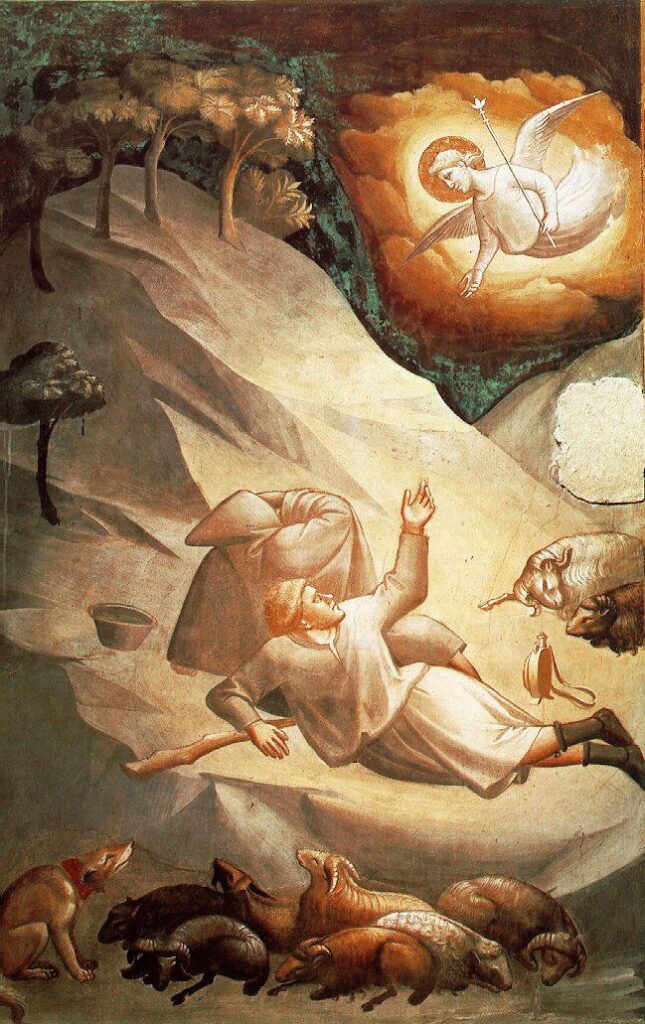“When is Christmas?” If you have little ones in your household, this question is floating in the air. A grandchild asked it of me yesterday. She seemed astonished to learn that Christmas Eve would be coming in one week, despite seeing three candles lit in the Advent Wreath and the majority of doors in her Advent Calendar open and emptied of chocolate. Then she lamented simultaneously how soon Christmas would arrive (“We’re just not ready, Grandma!”) and the fact that she still had to wait a whole week! You have to love a child’s mind.
As a liturgical celebration marking the birth of Christ, there are two answers to the question “When is Christmas?” For Western Christians (Catholics, Protestants), Christmas falls on December 25th; for Eastern Christians who follow the Julian Calendar for liturgical seasons, Christmas falls on January 7th . . . except for certain dioceses within Orthodoxy that align themselves with the Gregorian Calendar solely for occasion of celebrating Christmas on December 25th.
Well, that gives us Part One of the answer. But it leads to a bigger question: “Why is Christmas celebrated on December 25th?” This question drops us into the thick of it!

According to most scholarship, Jesus’ birth occurred sometime between August and early fall. This conclusion stems from two factors: considerations of weather and travel conditions in terms of Caesar Augustus’ decree that “all of the inhabited earth” should be counted and the New Testament report of shepherds in the fields, tending their flocks. The later observation implies that livestock were grazing over a broader area, as opposed to being more contained during colder months. In the world of shepherding in the Holy Land, grazing far and wide would have begun right before Passover (as early as late March) and continued until mid-November.
But even this information invokes ambiguity, since sheep and goats still grazed in fields during colder months, although more likely fields closer to home. Often smaller flocks were confined within the lower levels of dwellings, so designed for that purpose. Either way, in winter months shepherds had to supplement the flock’s diet by cutting foliage or finding other food for them. In the biblical account, this activity does not seem to be implied.
So, adding together the information that the order for the census would have avoided cooler, rainier months and the likelihood that sheep were grazing far from the settlements, scholars deduce a late summer or early fall birth date for Jesus.
There is another line of reasoning based on the priestly schedule of Zacharias (Zechariah), husband to Elizabeth and mother of Jesus’ all-important cousin John the Baptist. Zacharias was known to serve in the Temple in either June or December. The Bible states that Elizabeth became pregnant after he returned from those duties. We are told that the Annunciation of Mary (conception of Jesus) occurred six months after cousin John’s conception. If you follow that reasoning with a nine-month measuring stick, you end up with a date of Jesus’ birth in either September or March.
So, no matter which of these narratives you like, one thing is for sure: neither lands on the date of December 25th. So how did that day get picked?
Widely circulated as fact is the story that December 25th was selected by anonymous early Christians in order to mask the popular “pagan” festivals held around the Winter Solstice—that phenomenon where the the longest period of darkness occurs on the night of December 20. This solar event historically has incited reveling and behaviors either sinful or, at the very least, chaotic and disconcerting.
That may have been a factor, but personally, I tire of this superficial narrative. It frequently is delivered in a manner that demeans the celebratory symbols of Christmas (trees, candles, songs, decorations). Also, there is a scholarly problem with the narrative: it appears in written form only in the twelfth century. By the fourth century, the dates of December 25, as well as January 6, the all-important feast of the Epiphany, were already set!
One branch of scholarship explains the December dating of Jesus’ birth as a response to the date of the Annunciation, celebrated by Christians on March 25. This date was formulated in early Christian times in light of possible dates for Jesus’ Crucifixion. It pulls from ancient Jewish thought about Creation and embodies the idea that Divine Conception and the Redemption should occur on the same date.
Still, wouldn’t you think that concrete information as to Jesus’ birth would have been recorded somewhere? The Star followed by the Wise Men evoked a serious, indeed deadly, response from King Herod. Witnesses to His nativity (Mary for starters) were around to provide the information. Yet, if we recall that the tradition of celebrating individual birthdays did not exist in Roman times, nor was it established during early Christianity, the initial disinterest in determining an exact date for Jesus’ birth is not so surprising.
The whole issue of dating historical events makes interesting fodder for discussions with children. In a world so used to pinpoint accuracy, the idea that much is unknown from the past can seem hard to believe. What is clear, though, is that our beloved traditions for Christmas, starting with the season of Advent, and continuing until Epiphany, are solid and immovable. Conditions in the outside world may affect details of their practice, but none of them can affect their truth or power, even in a year where so many contrary winds have blown against them.




This <33